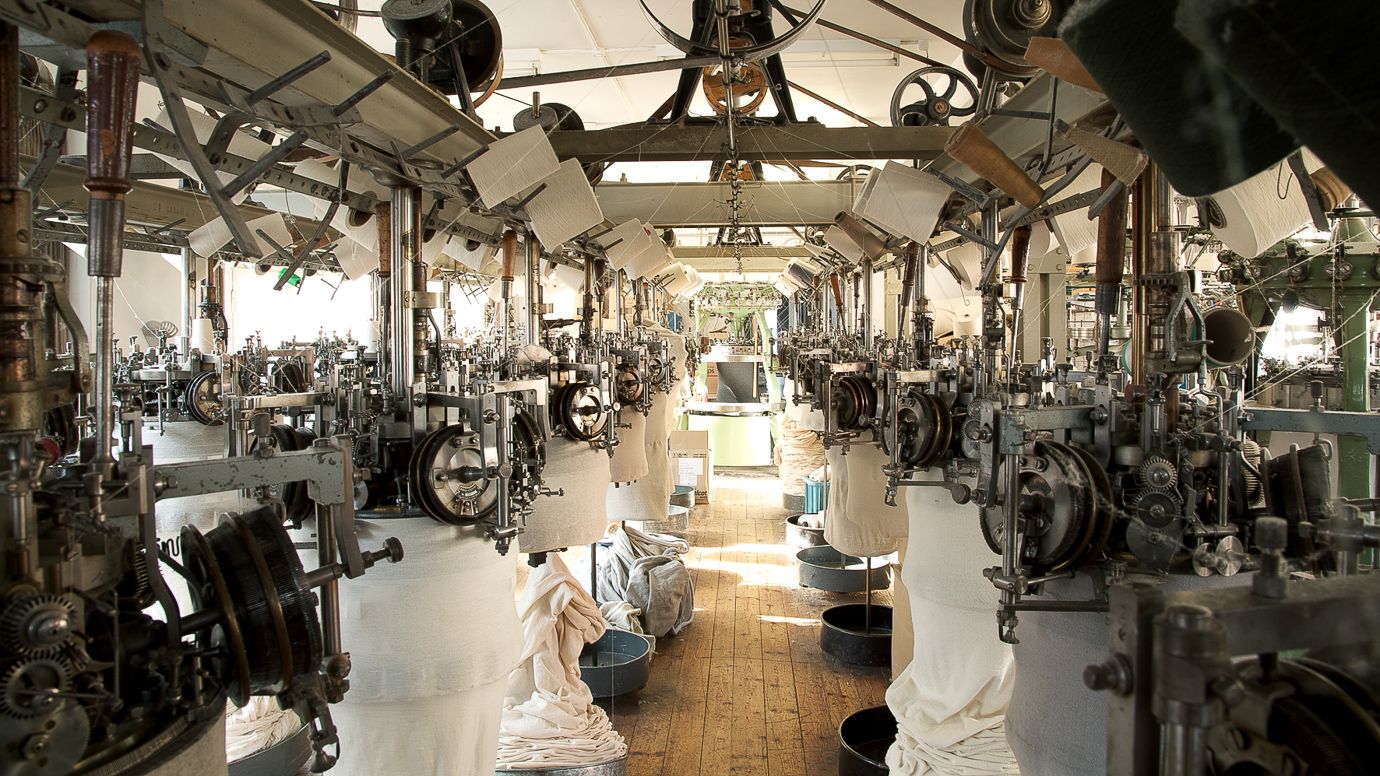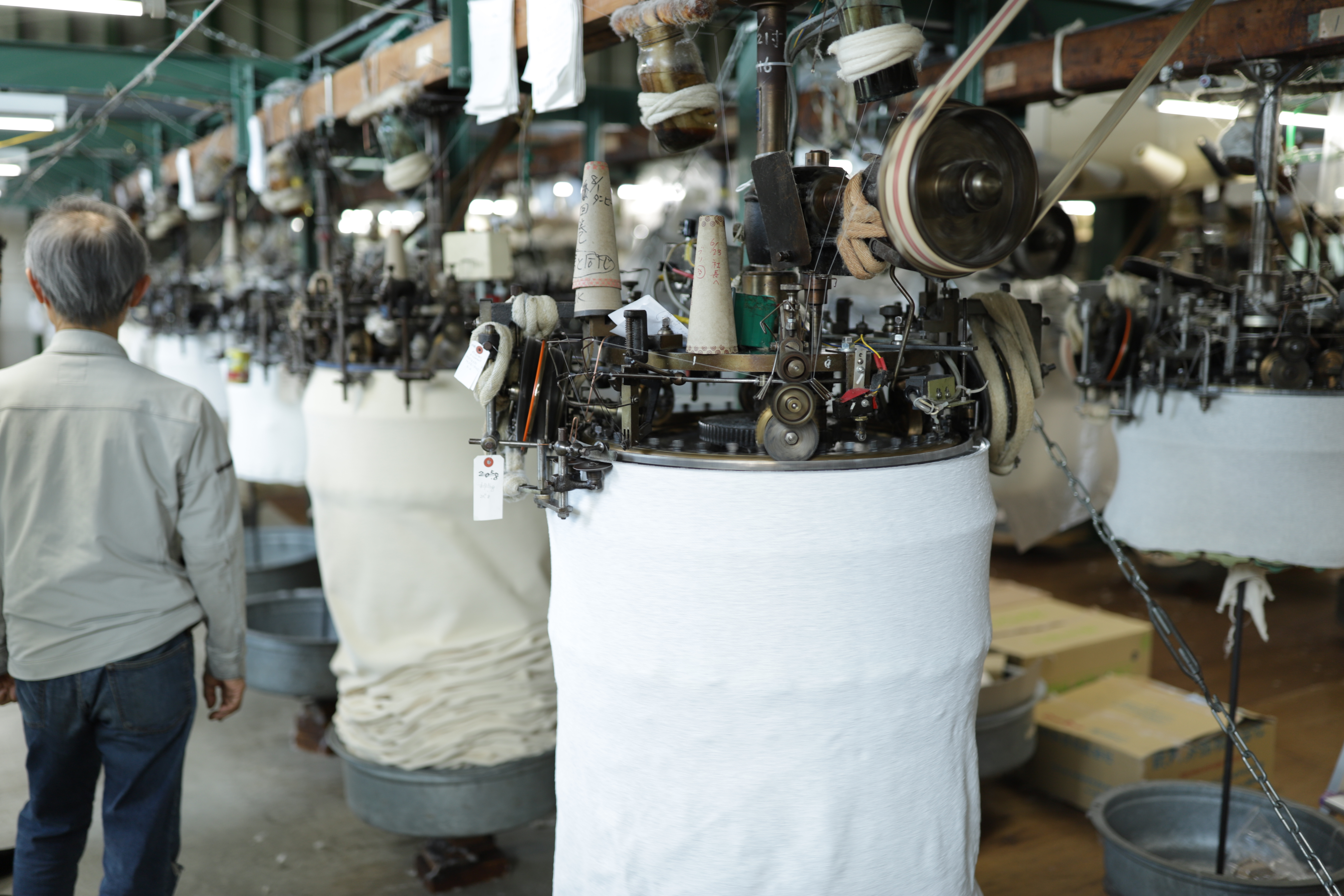Loopwheel weaving is performed on circular knitting machines that stack layer after layer of cotton in a giant cylinder. These vintage machines, can only perform 24 rotations per minute, which allows for the production of about one meter of fabric per hour. This slowness is crucial, as it prevents any tension on the cotton threads, thus creating a softer and denser fabric than standard fleece.
The History of Loopwheel Weaving
Similar to selvedge denim and shuttle looms, Loopwheel machines were gradually abandoned starting in the 1950s. Despite the superior quality of the fabrics produced, the production pace was too slow to meet the growing demands of the textile industry. It was during this period that replacement machines were introduced, such as the "Medium Speed Sinker Knitting Machine," which, while faster, still relatively well mimicked authentic Loopwheel weaving.
Over the years, High Speed Sinker Knitting Machines have emerged, marking a more significant difference with their predecessors. These new machines have significantly increased the speed of manufacturing and the quantity of production.

Example of a "Modern High Speed Knitting Machine"
The Rarity of Loopwheel Machines Today
Today, the still operational Loopwheel machines have become very rare. Only a few factories continue to use them, mainly in Japan, but also in Germany, in the Merz B. Schwanen factory.
To manufacture a single piece, it takes nearly 1 hour and 30 minutes just to produce the raw material. This is in addition to the shaping time and any possible dyeing steps. This artisanal and meticulous process explains why a "loopwheel" sweatshirt is more expensive than a standard sweatshirt.

The Merz B. Schwanen factory located in the Swabian Jura in Germany


